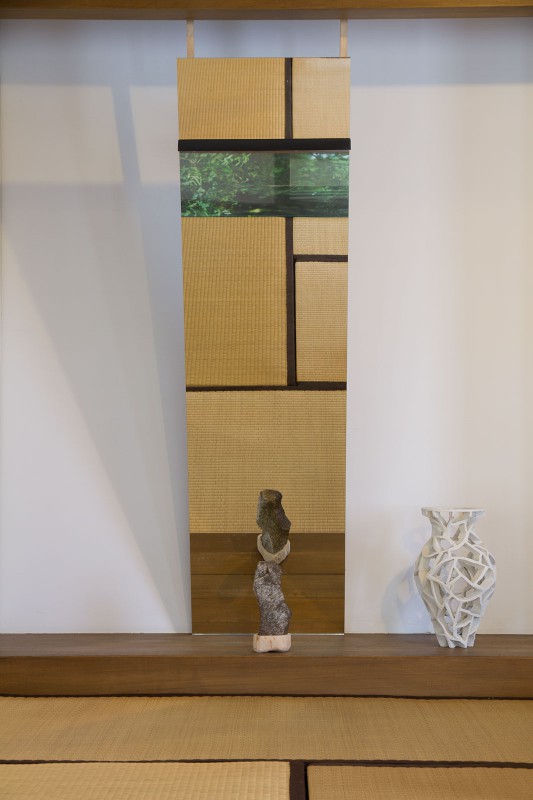
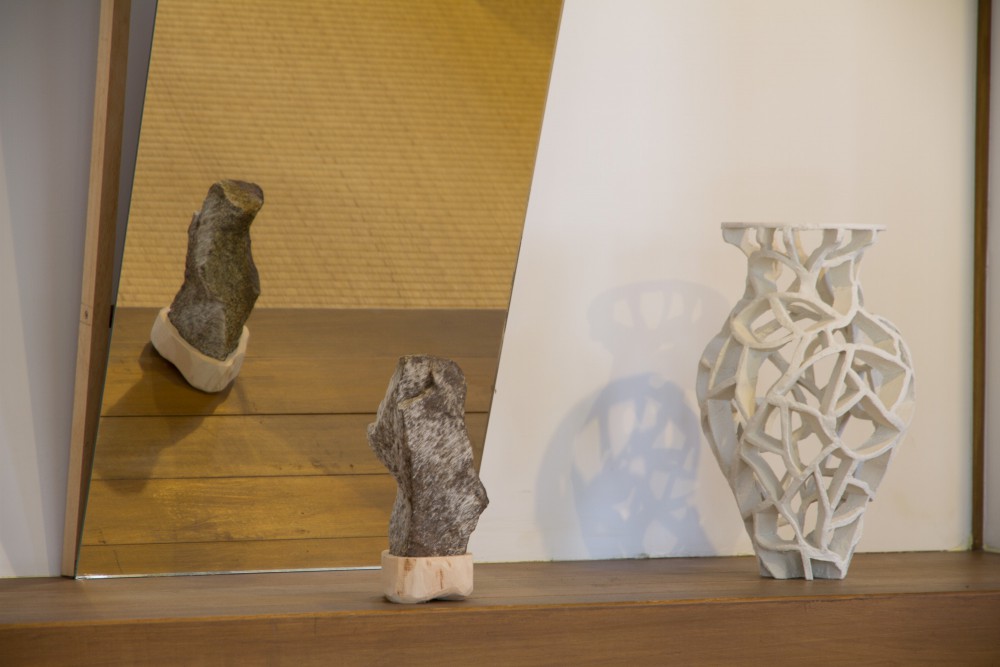
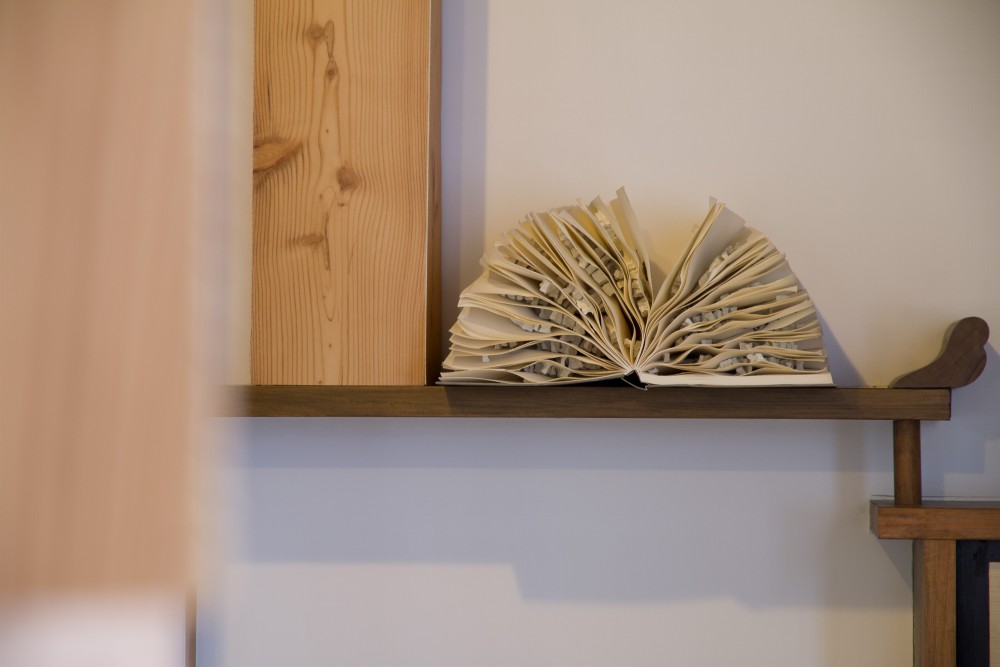
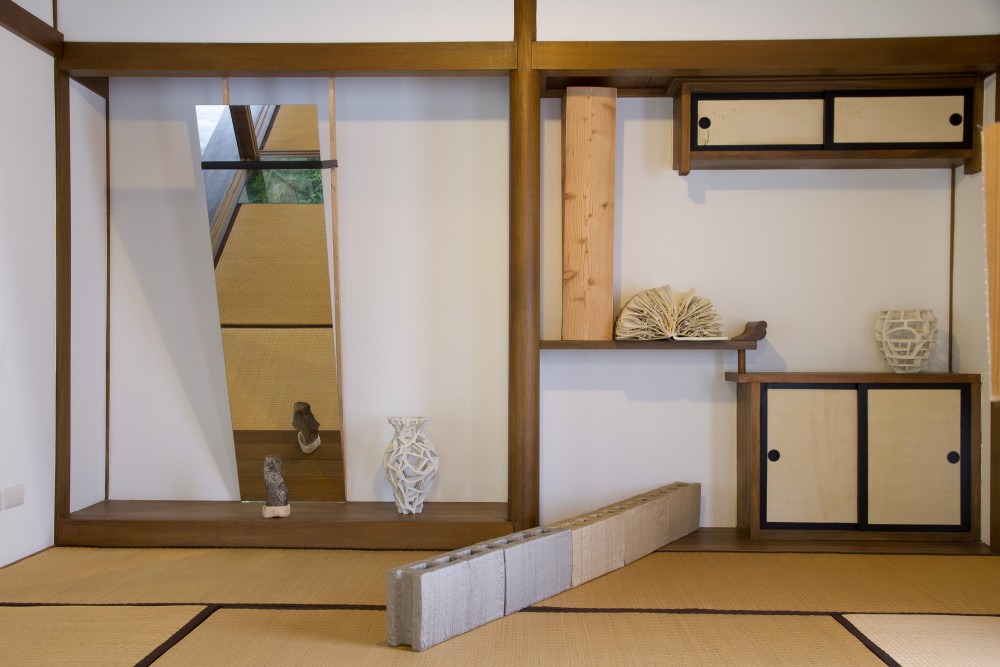
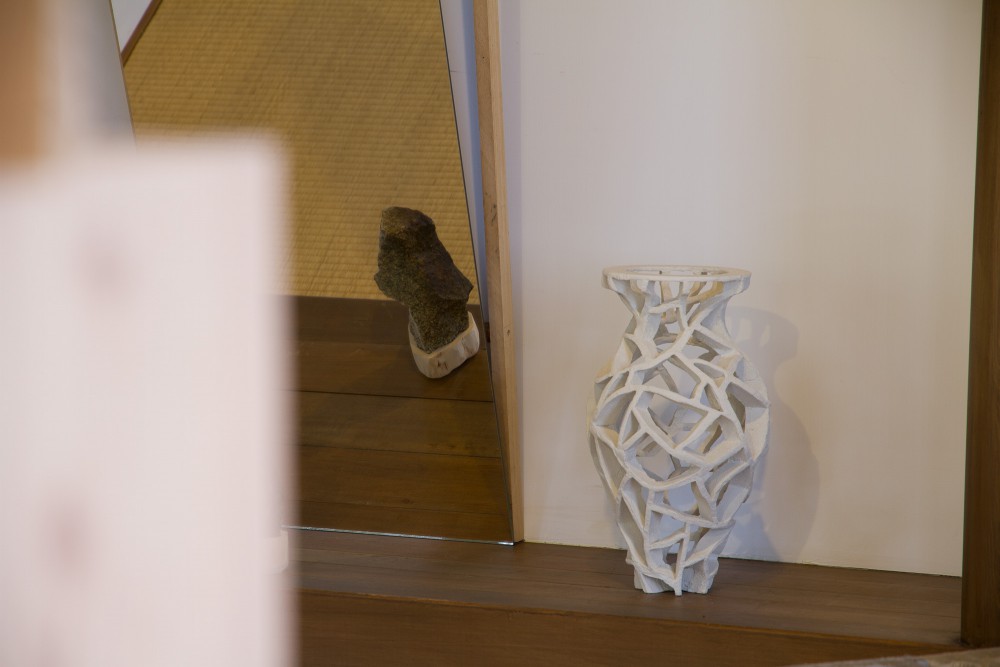
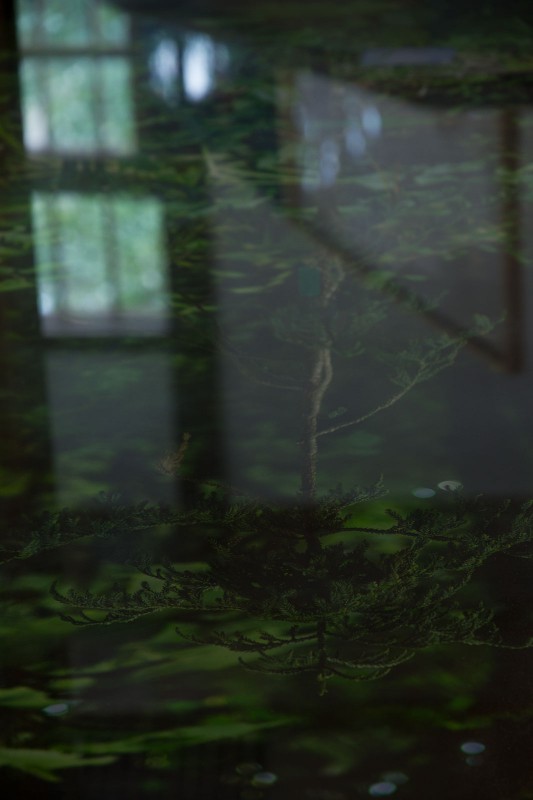
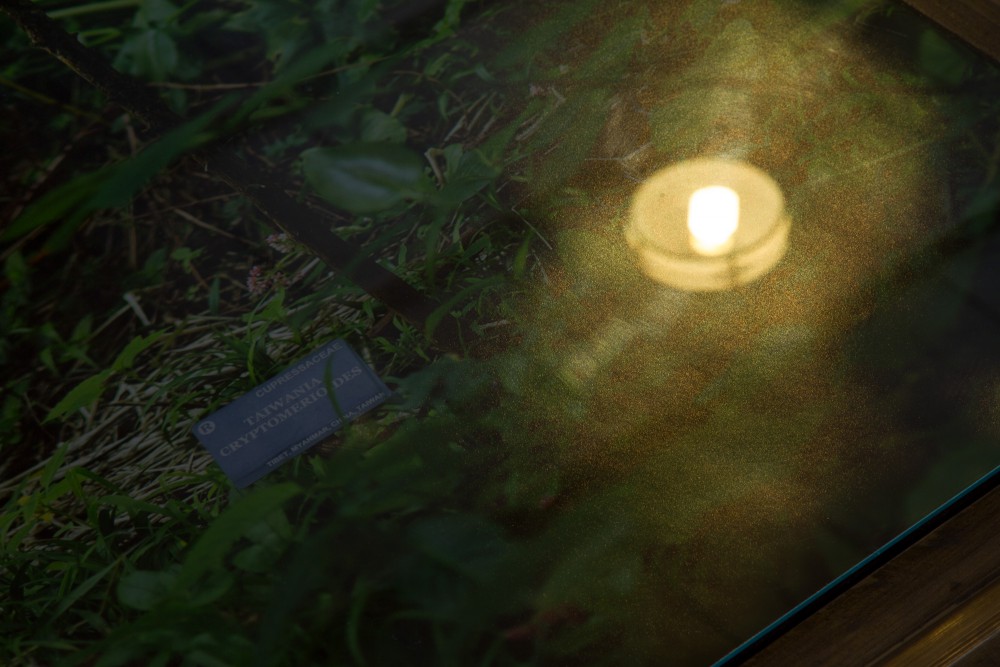
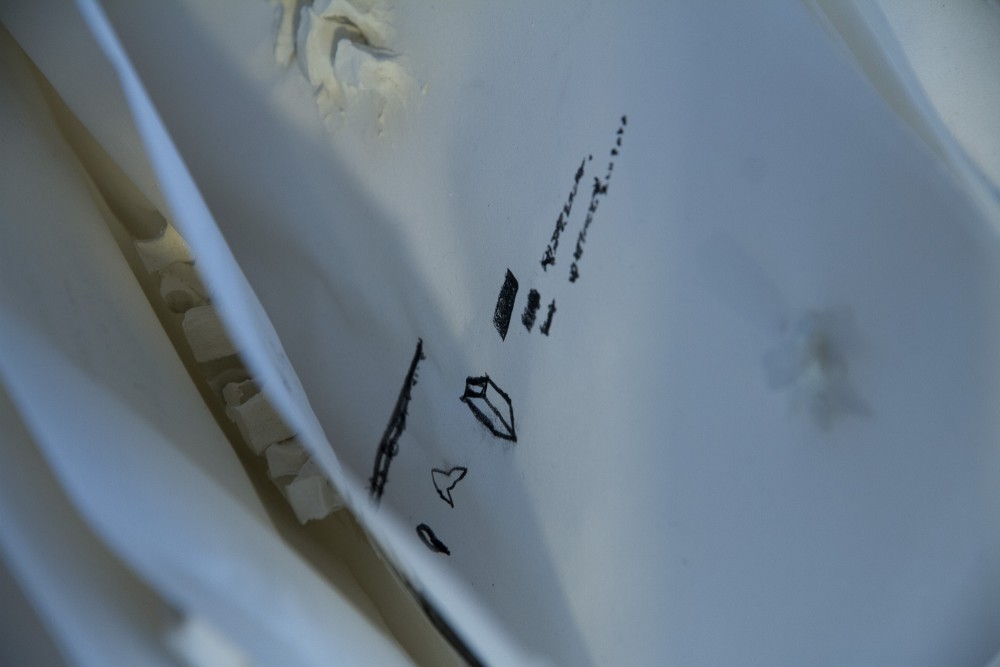
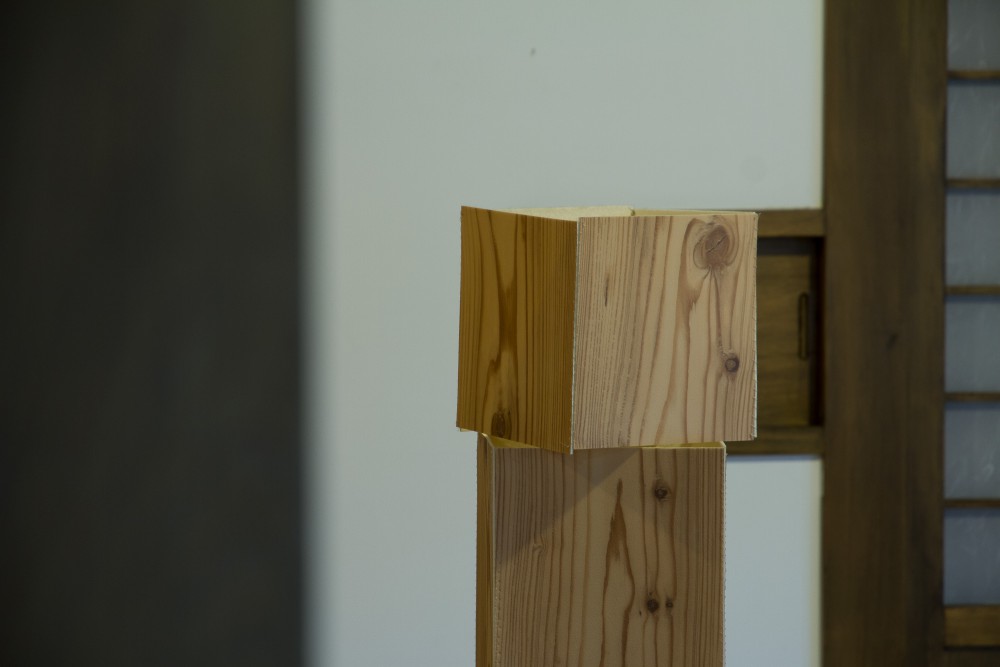
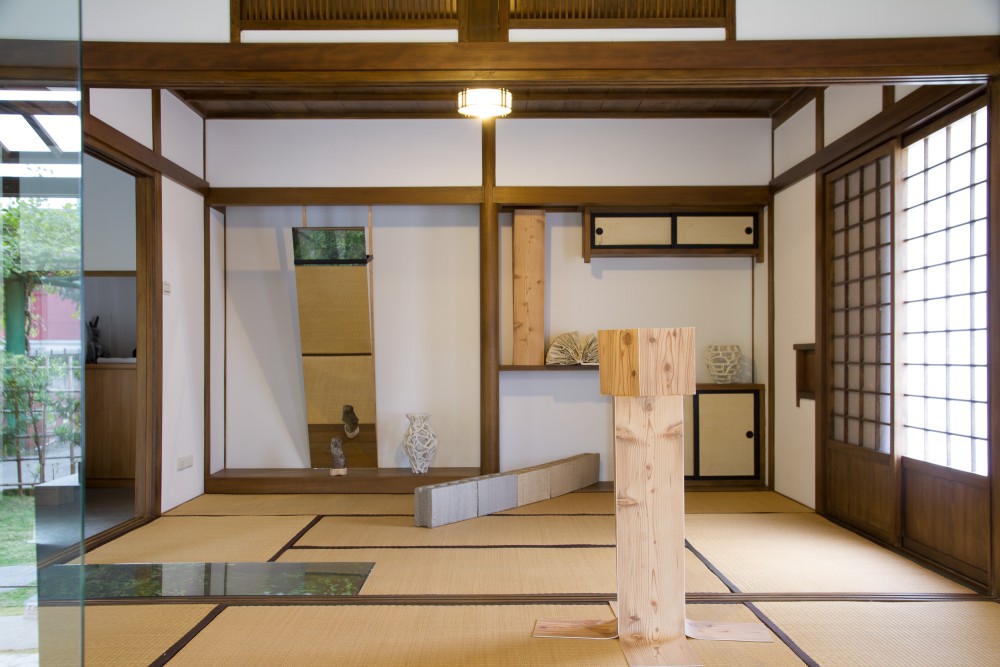
pain perception of a neighbor
2016
mortar, mirror, wood, fabric, stone, photos, glass, drawing, vinyl wood, etc.
Nanmoncho323 in Taipei Botanical Garden, Taiwan
Photo: Yasunori Kawamatsu










2016
mortar, mirror, wood, fabric, stone, photos, glass, drawing, vinyl wood, etc.
Nanmoncho323 in Taipei Botanical Garden, Taiwan
Photo: Yasunori Kawamatsu
Leaves Without Routes is an art exhibition featuring work by four Japanese artists – Yasunori Kawamatsu, Yuki Okumura, Nobuyuki Yamamoto and Kaori Yamashita – at Nanmoncho 323, a Japanese style house originally built in 1930s during the Japanese colonial period within Taipei Botanical Garden in Taiwan.
Kaori Yamashita’s site-specific installations consist of elements such as sculptural objects, drawings, photographs, etc. They are usually placed in a particular environment in a rather unexpected yet precise way that makes each element purposely relate with each other, and hold a quality that could blur the confidence within the existence of physical matter. For this exhibition Yamashita creates a new installation dedicated to the traditional features of the Japanese room in Nanmoncho 323. The cue for the new work comes from the vision she had in her mind: of a trunk as a theoretical concept floating in midair, without roots as a cause nor leaves as a result. This vision is informed by the Japanese idiom which is also the exhibition title ’ne mo ha mo nai’ (without roots nor leaves by direct translation). Perhaps, though, imagining a trunk dangling in the air could make something resemblant to experiencing ‘phantom pain’ (a sensation of pain in an absent limb, a portion of a limb or an organ that is not physically part of the body).
excerpt from exhibition leaflet
Curated by Naoko Mabon
Supported by Interchange Association, Japan